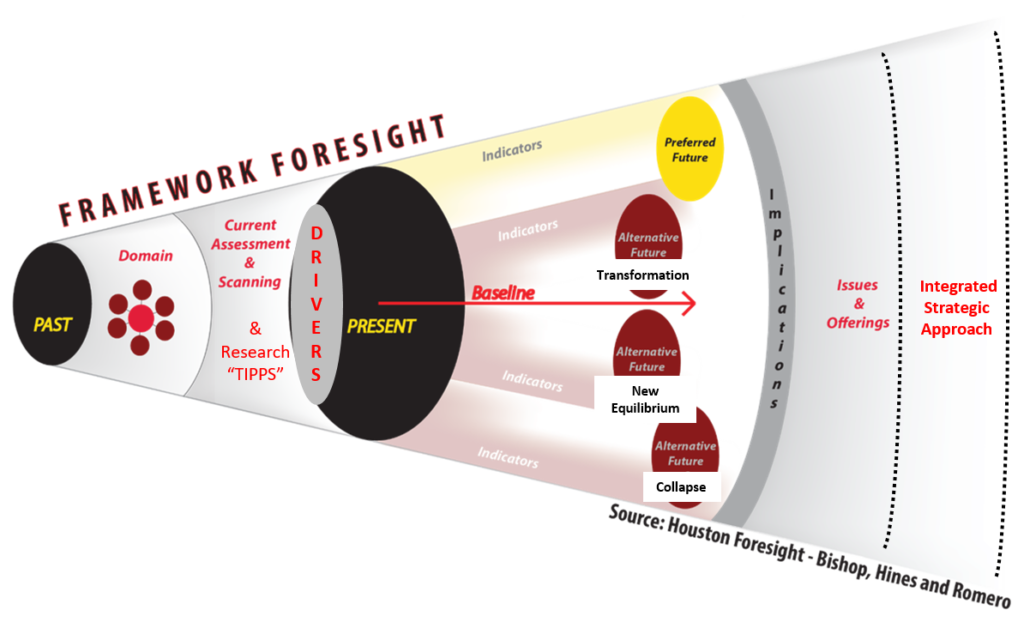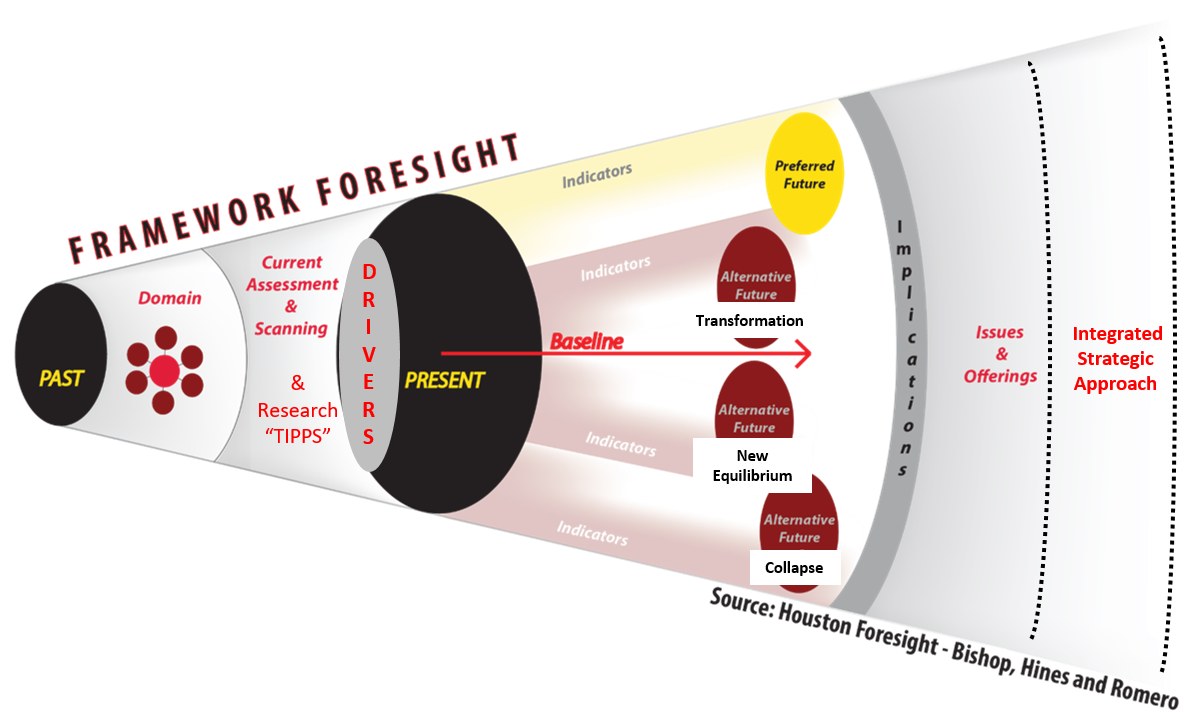It’s that time again. We’re always tweaking our core Framework Foresight process. Every few years the tweaks build up and it’s time to update the summary graphic. The changes to the process are described in a recent piece published in the journal Foresight. We’ll focus on the changes to the graphic.
The first is the addition of the Research “TIPPS.” One of the tough choices Peter Bishop and I made when we put together the original six Framework steps was the omission of “researching.” We wanted to have six single words. We toyed with researching, but felt that scanning was more futures oriented. We also toyed with scanning & researching, but stuck with the single words. So for years we’ve been explaining that scanning includes research. Now we don’t have to anymore J. TIPPS is the acronym we use for specific types of futures information: trends, inputs, plans, and projections. This specificity is different than scanning, which includes any type of signal of change.
The next addition to the graphic is the drivers. In practice, we almost always did drivers in our project work, but we didn’t explicitly include them in the earlier versions of the Framework process. Well, it only makes sense to teach what you practice, so it’s in there now. The last change was to include the four archetypes for the baseline and alternative futures. We decided a few years ago to use the archteypes as our core process. Just a quick reminder – while we have a core process, we do not in any way, shape, or form claim that this is the correct way to explore the future! Framework foresight is designed to be modular and incorporate other techniques. It just makes it simpler to teach to have a core process.
There you have it. We like the additions, but we recognize it is getting a bit busy and struggled a bit with that. Let us know what you think! – Andy Hines

Leave a Reply